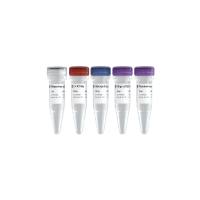RNA Oligonucleotide Synthesis Via 5-Silyl-2-Orthoester Chemistry
互联网
933
Rapid, reliable, and cost-efficient methods of ribonucleic acid (RNA) oligonucleotide synthesis are in demand owing to an increasing awareness of critical structural, functional, and regulatory roles of RNA throughout biology. The most promising area of growth and development is in RNA interference as an emerging technology for facilitating research in drug discovery and therapeutic intervention. Traditional methods of RNA synthesis, which are based on 2′-silyl protection strategies derived from deoxyribonucleic acid (DNA) synthesis strategies, are limited in their ability to produce oligos of sufficient purity and length for high-throughput applications. The more recently developed 5′-silyl-2′-acetoxy ethyl orthoester chemistry (2′-ACE™), circumvents several limitations of the 2′-silyl approaches. A clear improvement in RNA synthesis technology, 2′-ACE results in faster coupling rates, higher yields, greater purity, and superior ease of handling. Another advantage of the 2′-ACE protecting group strategy is that the molecules can be produced in an intermediately protected form that is soluble in aqueous solutions but resistant to nuclease attack. The chemistry can be scaled up or down and is flexible enough to allow for the incorporation of modifying groups if desired. A detailed description of the 2′-ACE protocol and procedures for end product analysis are presented.


![[3-[[tert-butyl(dimethyl)silyl]oxymethyl]-1,2,3,5,6,7-hexahydropyrrolizin-8-yl]methanol;1788873-94-8;97%;V17605-100mg](https://img1.dxycdn.com/p/s14/2025/1027/131/2990871289947862891.jpg!wh200)





